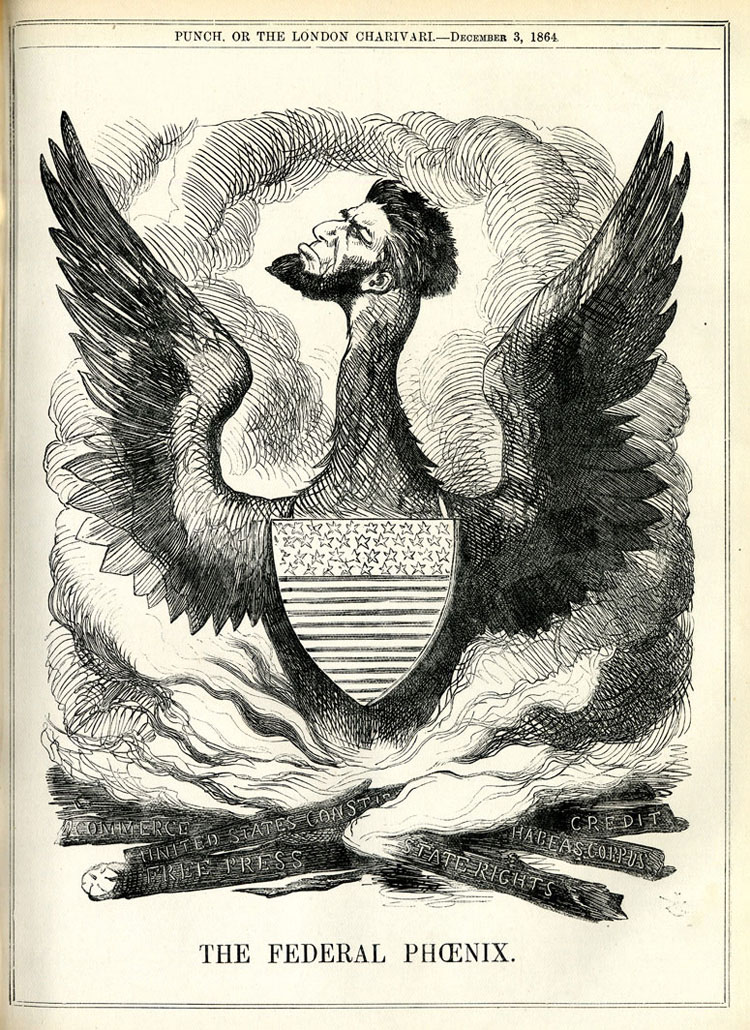Abraham Lincoln as the “Federal Phoenix” (1864)
Abraham Lincoln as the "Federal Phoenix" rising from the fire of the American Constitution (1864)
 |
|
John Tenniel, "The Federal Phoenix", Punch, Volume 47, December 3, 1864.
|
Source
Allan T. Kohl, Minneapolis College of Art & Design. <The Federal Phoenix>. From "The Federal Phoenix," Punch, Volume 47, December 3, 1864, p. 229.
Description
The image above is by the British cartoonist and illustrator John Tenniel (1820-1914) which appeared in the December 1864 issue of the satirical magazine Punch. Abraham Lincoln had recently won a hotly contested presidential election against his Democratic opponent George McClellan. To Tenniel and his English readers it seemed that Lincoln and the Republican Party had "risen from the ashes" of defeat like the proverbial phoenix. A rather stern and arrogant looking Lincoln is unfurling his political wings ready for another 4 years in office. At the end of its lifespan the phoenix is consumed by fire and emerges anew (or resurrected) for another long cycle of life. In this picture the fire which consumes the old phoenix and readies it for another life are logs with the names "Commerce," "United States Constitution," "Free Press," "Credit," "Habeus Corpus," and "States Rights." Tenniel (along with many contemporary American critics of Lincoln) thought that the American Republic itself had been consumed by the fire of civil war which had brought about press censorship, the imprisonment of critics, the suspension of habeas corpus rights, the imposition of the income tax, and other measures.
Analysis
British and American classical liberals and constitutionalists were split over the issue of the secession of the southern states and the "Civil War." Those in the tradition of Thomas Jefferson thought that the original compact between the states to form the union was a voluntary and mutual one and that if any state or group of states wished to leave that compact they were free to do so. Free traders, especially in Britain, supported the free trade South over the protectionist North, although both Richard Cobden and John Stuart Mill thought that this argument was exaggerated. Others saw the struggle as one between a rising mercantilist North which wanted to raise tariffs and impose a Hamiltonian "American System" of government funded internal public works on an unwilling South. Those opposed to slavery saw the war as a "clash of civilisations" between a "free labor" industrialising North against a slave-owning agricultural South. Others still, worried that the means chosen to fight the war, whatever the merits of doing so, violated important provisions of the constitution (as suggested by Tenniel's cartoon) which did not bode well for the growth of the state and the condition of liberty after the war.
Online Resources